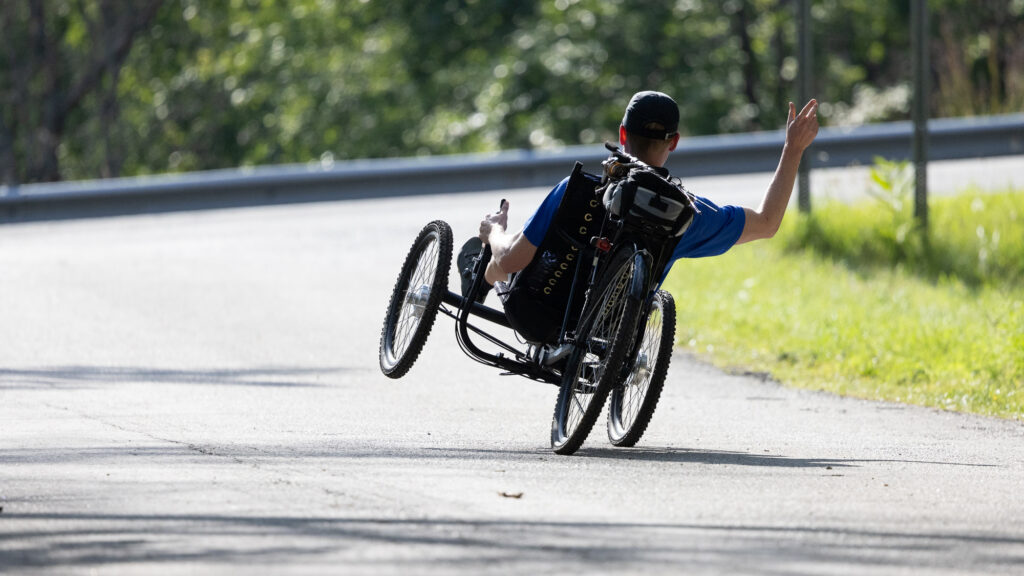
Showing Some Love To Your New Trike!
April 17, 2025
Everyone can use some love and attention once in a while. And your new BFF trike is no exception. Your trike is a mechanical device (but with a soul) and if you take care of it, it will take care of you. All it needs is a good wash, lubrication and some bolt checking once a month; more or less depending on use.
Washing: grab a bucket, soap, sponge/rag and water; roll up those sleeves and get to it.
- Dish soap, or a formulated bike specific cleaner will work great to cut grease and dirt.
- Use a sponge or rag to wash with.
- Don’t be afraid to wash the seat mesh too. Any padding will take a while to dry out.
- Have a couple of brushes on hand to scrub the chain, derailleur and sprockets.
- DO NOT use high pressure washers as they can blast dirt into sealed parts which will could cause issues and premature wear.
- You don’t have to avoid the brakes, but don’t soap them up excessively or let the soap dry on them.
- Rinse and then dry everything with another clean rag/towel.
Lubricate: let’s get that trike protected, running smooth and quiet.
- Start with getting a bike specific lubricant. Many bike lubricants will dry after being applied so dirt doesn’t stick to it.
- Don’t go too crazy with lubricant, but make sure each link in the chain gets touched. Turn the chain backwards and drop lube on the links as you go.
- Lightly getting the sprockets too won’t hurt.
- Apply a bit of lube to the derailleur’s (front and back) moving parts as well
- If you can, pedal the chain through the gears to ensure a good coating and penetration.
- Lightly wipe the chain down with a cloth to remove any excess lubricant.
- After a good washing consider hitting the pivots of the shift and brake levers with some lube as well.
- And last but not least, if you can get some lube on the cables and into the cable housing you will enjoy smooth, crisp shifting and easy braking.
Bolts: without bolts and quick releases our trike would not exist. Normal vibrations from road surfaces can move throughout the trike. Over time this can cause bolts to work their way loose. Make sure that everything is tight every so often so your bestie trike doesn’t leave you stranded.
- Any easily (re)movable parts, seat, wheels, etc. should be checked on every ride.
- Grab each seat stay and see if there is any movement. Visually spot each bolt to ensure it looks in place. If there is any movement tighten up the connecting bolts.
- Any battery mounts should be checked and snugged up if needed.
- Make sure the crank arms and pedals feel tight. Grab the crank arm and move it side to side (not around) and check for any slop in the bottom bracket (the sealed bearings they are connected to).
- Check for any slop in the hubmounts that connect the front wheels to the frame. And while you’re there check that the tie rods are on tight. The tie rods rotate a little bit which is the movement from the heim joint (the ball pivot that the main bolt goes through). But if the whole rod can spin or the lock nut at each end are loose, then the alignment should be checked (instructions/blog here).
- Inspect any idlers and chain tubes for excessive wear. Also ensure that the bolts holding them in place are tight.
- And finally, check accessories that are mounted; especially racks, fender and grab handles.
- If you find that a bolt is regularly backing out, a few drops of thread lock can help keep it in place.
In the end, a dirty and poorly maintained trike can last a long time. But life of it’s parts will be cut shorter and your riding experience will not be as quiet and worry free as compared to one that is shown some love. Taking care of your ride becomes easier the more you do it and is a great way to get to know your trike better.

